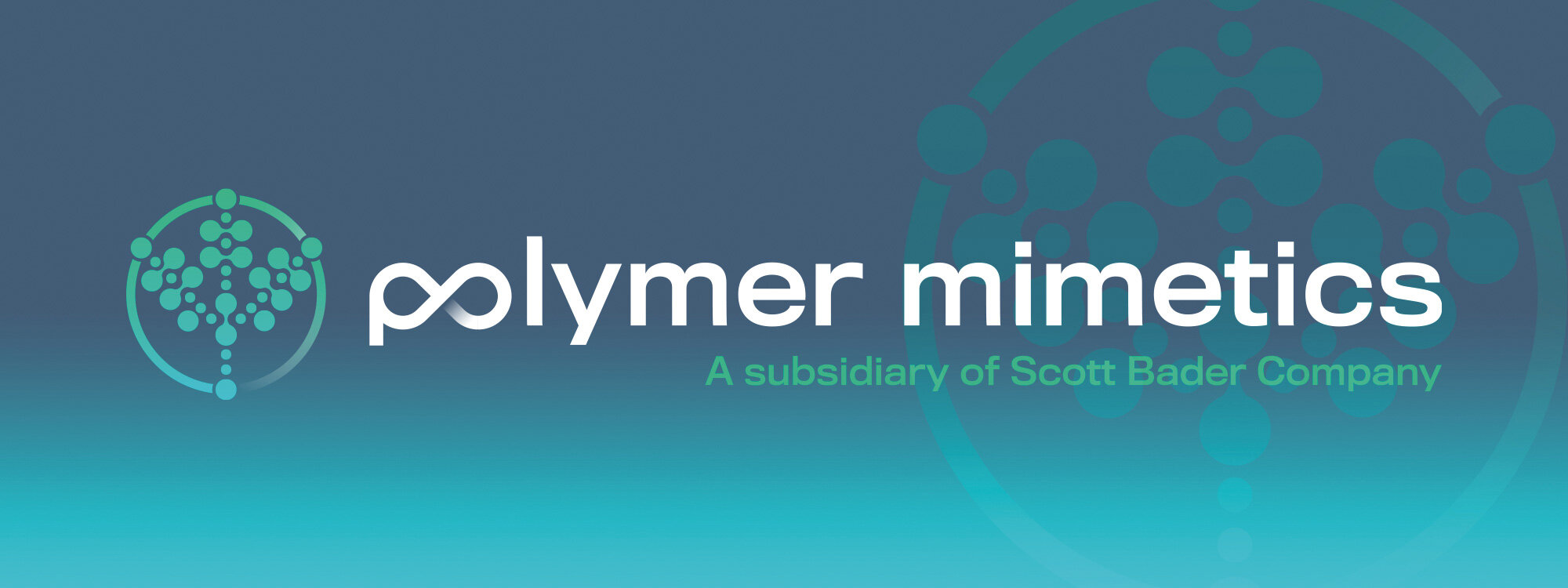Our joint venture with the University of Liverpool was formed in June 2020 as part of our commitment to work with technology leaders all over the world to develop new sustainable technologies that allow economic impact. The creation of our joint venture also generated new jobs in the Liverpool City region.
Joint venture objectives
To develop high performance polymers that can be used in
Scott Bader products.
With a funding commitment of more than £1 million from Scott Bader, Polymer Mimetics will develop a novel polymer chemistry platform that builds on technology developed by Professor Steve Rannard, from the University’s Department of Chemistry. The technology takes widely available chemical building blocks and, in a facile, highly scalable process, transforms them into high performance polymeric products with the potential to engineer in degradability. It is envisaged that this new generation of materials will have broad applicability in several markets including coatings, composites and speciality additives.
-

Paul Findlay
Chief Technology Officer (CTO)
Education: PhD University of Strathclyde, Glasgow.
Career summary: Predominantly involved in novel polymer R&D since leaving school, starting at Unilever’s R&D developing polymers from home and personal care applications. Following this I helped found a Unilever-funded start-up company to exploit some highly branched polymers developed in-house. Following this I was R&D manager at Revolymer/Itaconix where my main focus was in using responsive polymers in active encapsulation.
Role: To drive for success. This means ensuring my Mimetics colleagues have the facilities, opportunities, skills and direction to achieve the companies’ goals, whilst staying aligned to Scott Bader’s own and customers’ requirements.
Favourite element: Iron! Why? Without it we couldn’t breathe (haemoglobin), we couldn’t eat (iron catalyst in the Haber process which synthetically forms more than half the nitrogen in your body), we couldn’t go anywhere (cars, ships, bridges), and it would be rubbish to be stuck in the bronze-age with crumpled shirts!
-

Matthew Diable
Polymer Chemist
Education: First-class Master of Chemistry with Research in Industry degree from the University of Liverpool July 2020)
Career summary: Completed university placement year (2018/19) at Lubrizol as a Research Chemist, predominantly working on the development of a novel polymerisation technique to produce polymeric dispersants for multiple applications within the Paints and Coatings industry. Started as Polymer Chemist at Polymer Mimetics In August 2020, playing an integral part in the establishment of the company. Alongside this role, also studying a part-time Industrial PhD within the Rannard Group at the University of Liverpool.
Role: The development and industrialisation of Mimetics’ proprietary polymer technology (TBRT) for use in various high-performance resin applications.
Favourite element: Phosphorus. It is often overlooked to other elements, such as carbon and oxygen, as the element of life but, without phosphorus, we simply wouldn’t be alive. Notably, phosphorus is a key constituent in the backbone of our DNA and in the energy-rich organic compound, ATP, that is essential to power cellular processes. To add to this, the fascinating, yet rather weird, discovery of the element by Hennig Brand in the 17th century tips the scale as to why this is my favourite element. If you’re not aware, look it up; it will certainly help you to remember that phosphorus begins a P and not an F!
-

Alessandra Monaco
Polymer Chemist
Education: Pharmaceutical Chemistry (BSc), Queen Mary University of London, Green Chemistry (Msc) at University of York, Polymer Chemistry (PhD) at Queen Mary University and University of Warwick.
Career summary: Joined the company following completion of studies which were based on the preparation of stimuli-responsive glycopolymers with varying molecular architectures.
Role: To develop bio-degradable polymers with a particular focus of the materials being used within personal care.
Favourite element: Chromium, because chromium compounds give a lot of colours.
-

David Akstenn De Souza
Polymer Development Technician
Education: Chemistry BSc and Advanced Chemical Sciences MSc, both of which were at the University of Liverpool.
Career summary: After graduating joined the Beauty and Personal Care Team at Unilever as a Product Development Lab Technician to support the launch of Skin Cleansing projects like Lifebuoy and Dove. Then moved to Unilever’s Science & Technology team to support their Clean Future programme, which aims to replace all product formulations to biodegradable alternatives by 2030, before joining Polymer Mimetics.Role: Develop and evaluate new materials for new and existing applications.
Favourite element: Bismuth, everyone loves bismuth.
-

Jordan Carr
Polymer Development Technician
University: BSc chemistry, University of Aston.
Career summary: Just starting out with Polymer Mimetics with various waiter and bartender roles before.
Role: The development of biodegradable polymers currently working on the polymerisation process for scale-up.
Favourite element: Cobalt due to its broad range of applications. It also has an interesting history to its name - deriving from kobold (a mischievous spirit in Germanic mythology) as poisonous fumes would be produced when the arsenic-containing cobalt ores were smelted.
-

Josh Hayles
PhD Student
Education: MSc Chemistry with Research in Industry – University of Liverpool, currently Scott Bader-sponsored PhD student.
Career summary: Completed an industrial placement at Innospec researching sustainable dispersants and surfactants before taking my master’s research project in reactive inks for inkjet printing of solar cells. Now in final year of a Scott Bader sponsored PhD at the University of Sheffield researching de-bond on demand adhesives, supervised by Dean Bugg and Steven Brown.
Favourite element: Titanium because it wears many hats including pyrophoricity, photocatalysis and biocompatibility. While also taking part in some of the most influential scientific and cultural discoveries, Ziegler-Natta polymerisation, Sharpless epoxidation and David Guetta’s Titanium.

